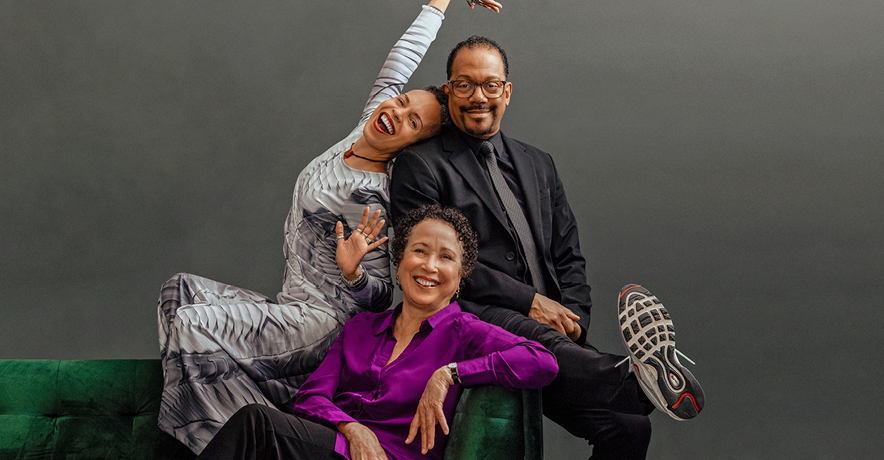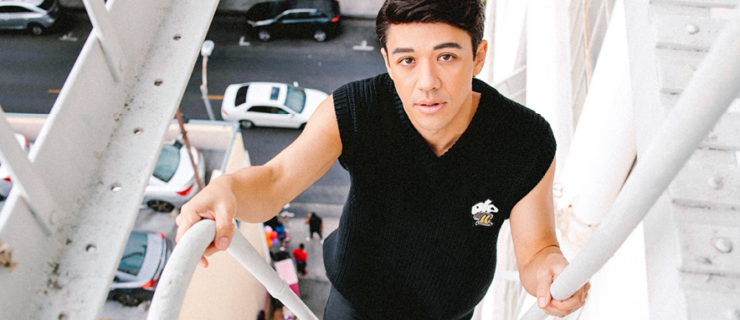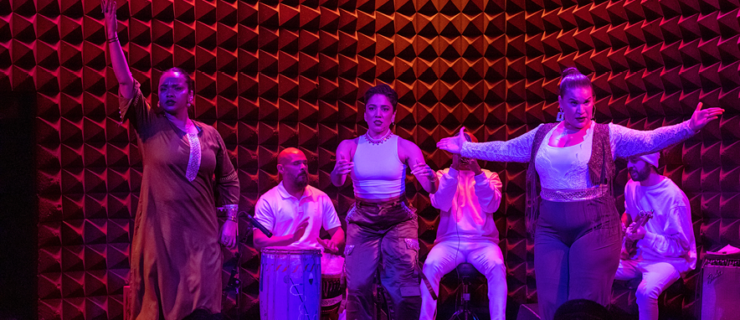Dance Theatre of Harlem’s New Leadership: A Conversation With Virginia Johnson and Robert Garland
At the end of June, Dance Theatre of Harlem artistic director Virginia Johnson will retire. After being a celebrated dancer with the company for almost three decades, Johnson returned—at the request of its co-founder and longtime director, Arthur Mitchell—to lead DTH in 2010. Robert Garland, who succeeds Johnson as artistic director, also has a long association with the company as a former dancer, the company’s first resident choreographer, and the director of the DTH School. Tai Jimenez, also a former DTH dancer, takes over the leadership of the DTH School.
As they prepared for the leadership transition, Johnson and Garland spoke with Dance Magazine about their deep, shared history with DTH, their commitment to continuing the work of Arthur Mitchell, and their hopes for the future of Dance Theatre of Harlem’s company and school.
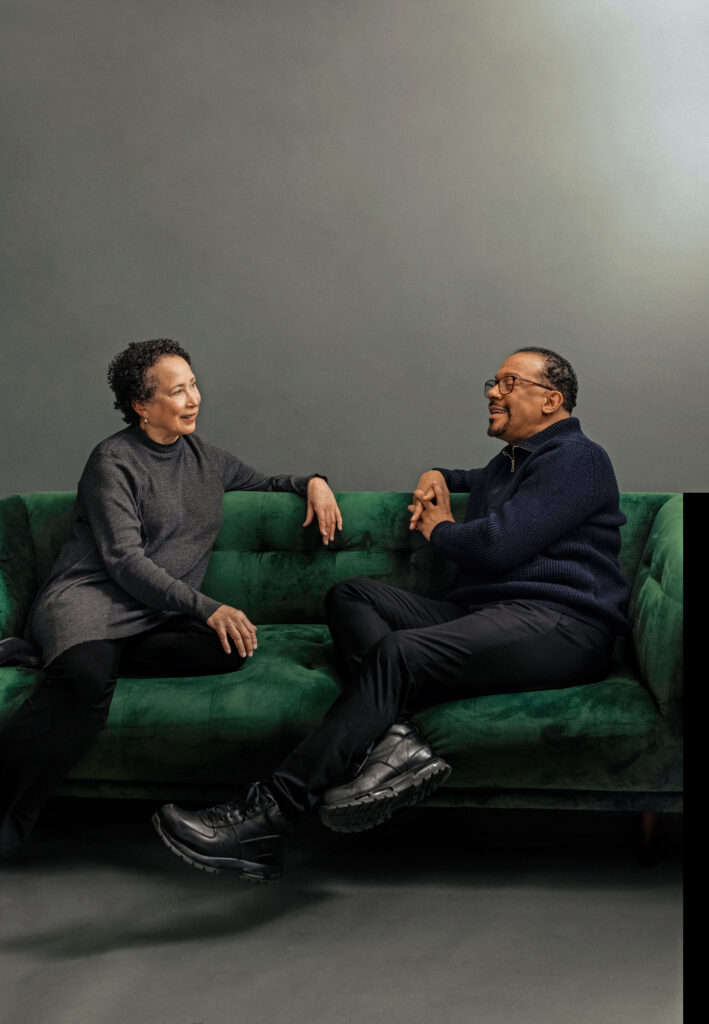
What were your early experiences working together?
Robert Garland: For a memorial for a friend we lost during the AIDS epidemic, I choreographed a solo for Virginia to a Stevie Wonder song. It was kind of a precursor to my ballet Higher Ground.
Virginia Johnson: It was a wonderful, wonderful piece. But that wasn’t the first thing that you’d choreographed.
RG: It was the first I choreographed for you. I had done some work at Juilliard. I thought of Virginia in my early choreography, because she was a part of beautiful theatrical works at DTH, like Fall River Legend, which is a masterpiece. Our Creole Giselle is another masterpiece, and I think that our Streetcar Named Desire was a masterpiece as well. The work of that time definitely influenced my early ideas; we were doing a lot of opera house dancing then, so that’s how I grew up.
VJ: That’s so interesting, that insight of you understanding DTH in the context of the opera house and the narrative ballets that I was doing. When you came to do Return, Arthur Mitchell said to you…
RG: “Lights and tights.” I had done a ballet called Crossing Over that was quite beautiful…
VJ: It was beautiful. It had a set, it had costume changes.
RG: But it was horrifically expensive. At the time, I had a lot of people in my ear, other than Arthur Mitchell, telling me what they thought was best, and I unfortunately listened. When it came to Return, he was like, “Lights and tights. That’s all you get, young man.” That’s actually where he was from, being a Balanchine dancer.
I love George Balanchine. And I love City Center. If you look at his work from that era, in terms of resources, Balanchine was a genius. I tried to copy him, as a creator. Virginia has another perspective as a manager and director.
VJ: This is something that is very, very serious. Dance Theatre of Harlem has had a history of ups and downs. We have a really brilliant executive director Anna Glass right now who’s managing how to make sure that we never stumble again.
It is a constant reality that you have your desires, your dreams, your expectations—and then you have your reality. You better keep those two things balanced. I appreciate that Anna understands that the bottom line is important, but the art is important as well. Sometimes you have to make a choice that’s not friendly to the bottom line, because the art needs it. You do the other, too, of course.
RG: Exactly. I purposely did a small cast for a work I did recently for San Francisco Ballet. Everyone had a chance to dance, and they loved having that opportunity. Even though we’re in this under-resourced space, you make things happen.
Will you continue to choreograph?
RG: I would like to. I have a particular style that I think is good for the dancers of this organization. But there are other considerations as well. I don’t want to lose the Balanchine legacy here, or our classical legacy of Karel Shook and Frederic Franklin. It’s going to be a balancing act.
Virginia, you agreed to come back to lead Dance Theatre of Harlem in 2009 after having retired from the stage in 1997 and having launched and edited Pointe magazine. What brought you back?
VJ: When Arthur Mitchell set you to a task—and this is something that Robert knows so well—you make sure you do it. When he said to me, “Your job is to bring the company back,” then that was my job.
Dance Theatre of Harlem had not been on the stage in people’s minds for almost 10 years. So just creating that entity again was the most important thing.
And, of course, finding the dancers. Later on, it dawned on me that my experience was very much like Arthur Mitchell’s had been when he created Dance Theatre of Harlem in 1969. You have dancers from all over, with all kinds of disparate training, that you have to make into a unified company.
How was the company different than before the hiatus?
VJ: In 2004, there were 44 dancers. We had national and international tours, we had theater cases, and we had a truck and a sprung floor on that truck. It was a very luxurious enterprise—and so many dancers. There were generations of dancers in the company at that point. When we came back, we had to build a new repertoire because we were so much smaller than the original company—we were 18 dancers.
How has the company since evolved?
VJ: One of the reasons that we’re doing this baton passing is that now we have a company that exists again. I looked at the company in 2019 and I realized that the dancers needed new challenges, they needed another vision. Robert is the perfect person to step into that place.
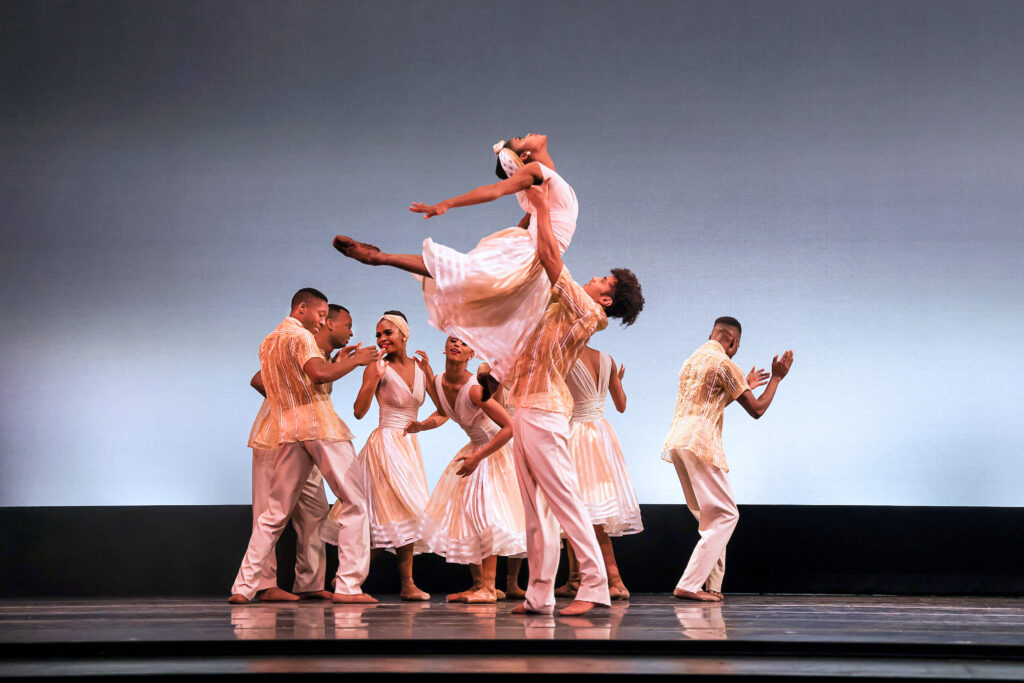
How are you similar and different as leaders?
VJ: I think the male/female thing is real. It’s an essential difference. It doesn’t mean that we are typically either one or the other, but there’s a different way of being in the world being male and being female.
RG: I think we’re similar in being able to anticipate things. Because we’ve worked here over the years, we know what the potential pitfalls are before they happen.
And, actually, I’m a traditionalist. Virginia has done a great job at expanding the horizon of what the artists experience here. I’m not quite as experimental, but I will be trying to keep that up, so stay tuned!
VJ: There’s also a difference in that Robert is a choreographer. He’s used to working with dancers and making sure that his intention is understood and fulfilled. That’s going to be a wonderful new thing for dancers to experience.
How is the leadership transition happening?
VJ: We talk about how things are going and where there are gaps. I’m not saying, “You should do this,” but if something comes to me, I’ll think: I’ve got to tell Robert about this, because he’s going to be blindsided if he doesn’t know.
RG: I did have the opportunity to watch Mr. Mitchell for years, as well. That also prepared me quite a bit. And I’m going to be really crazy and say that I find running the school more challenging than the company.
VJ: As he says now…
RG: Well, let me just say the school is its own thing. I don’t want to jinx myself.
With the company, you won’t have parents involved…
RG: Yes, there is that element, where you have people who are paying money that express their expectations.
VJ: They’re now called presenters.
[Dissolves into laughter.]
RG: That was good, Virginia! Presenters as the new parents.
Virginia, what will be next for you?
VJ: Sleep! I haven’t had a minute to really dig down deep into what’s happening next for me. I like to say I’m looking forward to being an artist again, rather than an arts administrator. That’s going to be a completely different experience, solving smaller problems on a much more basic level.
Did it surprise you how much of that was required for the job?
VJ: Well, Caitlin, you know that being at Pointe was really an education. And so I was not surprised at how much other stuff besides the art I had to deal with—and I was grateful for that experience.
Would you agree that the mission of DTH seems increasingly important in the current cultural and political climate?
VJ: This idea, I think it’s an important one, because I don’t see ballet or the company’s work as being separate from the world that we’re living in. In fact, I think that we have a purpose to keep people steady in this climate. That’s an essential part of what we’re doing.
RG: Dance can be put into the “it’s an ephemeral thing that no one should be thinking about in this time” category. But I do believe, as Arthur Mitchell said, that “the arts ignite the mind, they give you the possibility to dream and to hope.”
There are things that impact us, like gentrification. In my day, you could live in Harlem in a three-bedroom apartment for $150 a month. Now there are families in Harlem moving out because it’s too expensive. It’s here, it’s Philadelphia, it’s any urban center where Black people have been for generations. In our school, we now have more Caucasian or white students, and we have many more West Indian students and African students. That’s been fascinating.
Equity has a price tag, and that’s the part that no one wants to talk about. We’ve had lots of panels, and we talked about everything, but there’s a price tag. I’m hoping that what the DEI conversation will produce is a cabinet-level arts person. That is a real aspiration and it just makes sense.
Do you find that the conversation about DEI has not turned into funding?
RG: It has not, because most of the solutions have been representational. I’m all for representation—you know I love the Obamas. But there has to be some support behind it. We, as an organization, have unfortunately been under-resourced as compared to our competitors for decades. It’s still a struggle, and it shouldn’t be at this point in time.
VJ: People have come to think of Dance Theatre of Harlem as some kind of exception. When Arthur Mitchell created this enterprise, it was really to be a model for what an arts organization should be.
People celebrate us and love us, but they haven’t taken on that idea that being important in your community, being a trailblazer in the art, and being an institution of training are things that every company should do. I want DTH to be the example, not the difference. So, while the need for an institution like Dance Theatre of Harlem remains very true, I also wish sincerely that we had more people copying what we’re doing. Rather than thinking “DTH can do it,” instead thinking “I should do this too.”
What are your thoughts on the idea of legacy?
VJ: I care not one shred about my own legacy. You do what you love, you do it as long as you can, you try to make a difference, and you try to create something.
We are carrying Arthur Mitchell’s vision forward. He was a brilliant individual, a tireless visionary. It’s a legacy that’s bigger than one person, in terms of the ideas that he started and what he wanted to create in the world. It’s still to be realized. That’s to me what this should be about—less about the person in the role and more about the work that needs to happen and how it can happen.
It’s clear that Arthur Mitchell’s ideas continue to be at the heart of this organization.
RG: Definitely. It was his body. The body of color in this country has been the site of some really bad things and some really beautiful things. And his body was dedicated to this space, first to George Balanchine and then to Dance Theatre of Harlem, and I take all that very seriously.
We’re a unique organization in terms of our whole trajectory, culturally, in our community and artistically. Twenty-five years ago, people didn’t understand that you could have an artistic vision and a social vision in the same space. Arthur Mitchell often heard, “Arthur, is it a community-based organization or is it a ballet company?” The newer generations get it; it’s no longer anathema to have this high art form in a place where it heretofore did not exist.
Is your hope to cultivate future leaders from within the organization?
VJ: Arthur Mitchell really was about modeling the future, so developing leadership from within to carry these ideas forward is an essential part of what he was creating.
RG: There are a lot of leaders today who were Arthur Mitchell protégés: Melanie Person at Ailey, Alicia Graf Mack at Juilliard, Dionne Figgins at Ballet Tech, Endalyn Taylor Outlaw at University of North Carolina School of the Arts, and Theresa Ruth Howard at MoBBallet, to name a few.
What are your priorities for DTH?
RG: One priority is to create a space, in the daytime, for dancers that really want to aspire to be the best to work on their ballet technique. That will not only give dancers to our company but also to the field. And, of course, to develop choreographers that have a consciousness of the mission of the Dance Theatre of Harlem.
VJ: DTH is a touring company, which is a very special entity in this world right now. It affects the way that we work and the kinds of works that we can do. And so, we want to dig down deep into how to make that a more effective way to reach people around the country and around the world.
If anything was possible for this company, what would you like to see?
RG: I would like a larger company, and a larger New York season.
VJ: Dance Theatre of Harlem forever. It must continue, and thrive, and become more and more, and be that beacon. It really must.
